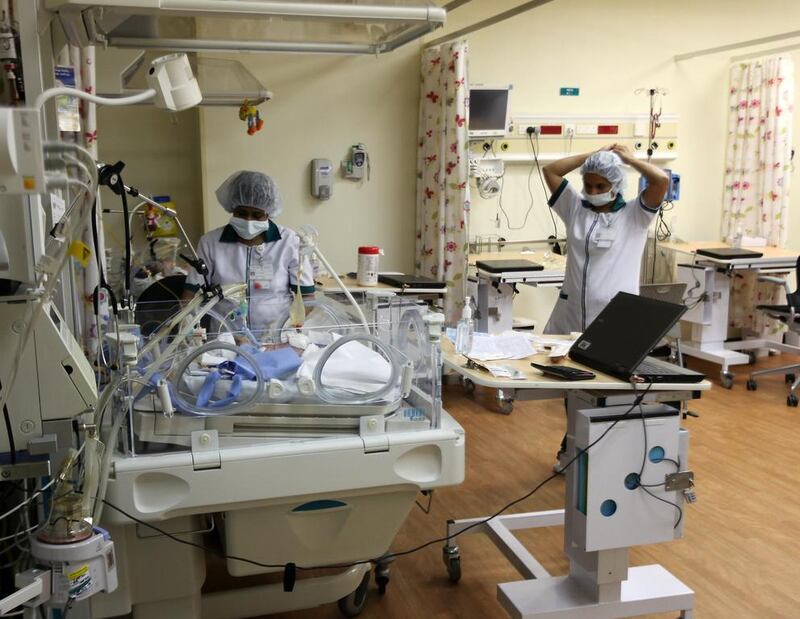ABU DHABI // Health officials have identified a “critical capacity gap” in intensive and critical care treatment across the emirate of Abu Dhabi.
Statistics published on Tuesday by the Health Authority Abu Dhabi (Haad) for last year have shown that more hospital beds in intensive and critical care units are needed to meet demand.
Severe capacity gaps were also found to exist in emergency care, neonatology, paediatrics, oncology, orthopaedics, rehabilitation and psychiatry.
The authority highlights that the optimal occupancy rate for critical-care beds is 75 per cent. At present the average exceeds this amount across the emirate and in some cases is 100 per cent.
It is not the first time that Abu Dhabi’s critical-care provision has come under scrutiny.
In June last year, Haad published recommendations that stated that the emirate’s 594 critical care beds were operating at between 95 to 100 per cent capacity and that 216 additional beds were needed by 2031.
“There must be initiatives that come out of this and we will be doing that, we are doing something about it,” said Dr Maha Taysir Barakat, the director general of Haad.
“There will be a whole suit of initiatives to try to significantly improve the quality of care, the access of care and the cost of health care. We accept that we don’t have a perfect system, very few health-care systems across the world are perfect.
“That doesn’t justify doing nothing and, of course, we are doing something about it and we hope there will be an improvement in the coming months.”
There has been a 13 per cent increase in the number of physicians and dentists since 2011 and an 11 per cent growth in facilities.
"The health-care sector is trying to cope with the gaps that we have, but despite the growth, we still need more. There are initiatives that we want to do to catch up with the demand," Dr Barakat said.
“Within a few weeks we will publish a strategic plan going forward to address these issues,” said Paul Hetherington, senior adviser of health-care strategy at Haad.
“We have over 2,000 beds planned or under construction across Abu Dhabi and many of those have intensive care beds.”
The 100-page document contains a comprehensive breakdown of statistics from across Abu Dhabi, along with a capacity master plan, which identifies gaps in capacity.
Findings include a 12 per cent increase since 2011 in “clinical episodes”, where patients meet with medical staff for treatment – totalling 12.8 million, with 67 million clinical activities performed.
Road accidents account for the highest death rate out of injury deaths in Abu Dhabi – accounting for 10.4 per cent of deaths.
Cardiovascular diseases caused more than 25 per cent of deaths last year, the highest overall contributor, and cancer caused 13.9 per cent.
Obesity rates of 33 per cent for males and 38 per cent for females were found across the emirate, thus increasing the risk of diabetes and hypertension among suffers.
As well as providing information for clinical practitioners, the statistics released on Tuesday are intended to be useful for stakeholders and investors.
“In addition to disease prevalence rates, Health Statistics 2012 presents health financial information in the emirate covering the three types of insurance products: Thiqa, Enhanced and Basic, which helps insurance companies and health service providers to improve their financial plans and increase efficiency,” said Lina Jichi, the head of health financing advisory and monitoring at Haad.
“Now they can compare their performance against other entities in terms of numbers of claims, average claim amount and how quickly their claims are paid, to identify any room for improvement and guarantee their business sustainability.”
It was revealed that the average annual premium for the enhanced cover remained unchanged last year at about Dh3,000.
Longer range predications were also included in the report, which suggest that by 2021 demand for inpatient services would require an additional 1,300 beds.
The full statistics for last year can be accessed at www.haad.ae/statistics
ksinclair@thenational.ae





